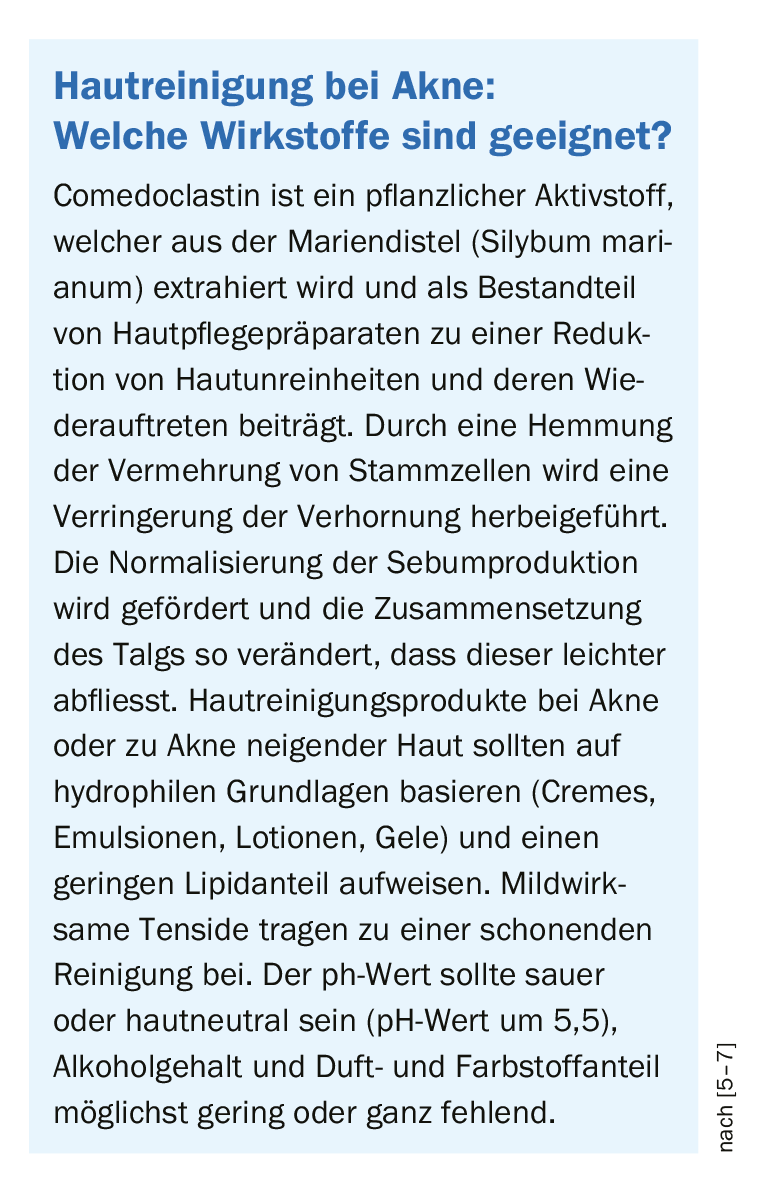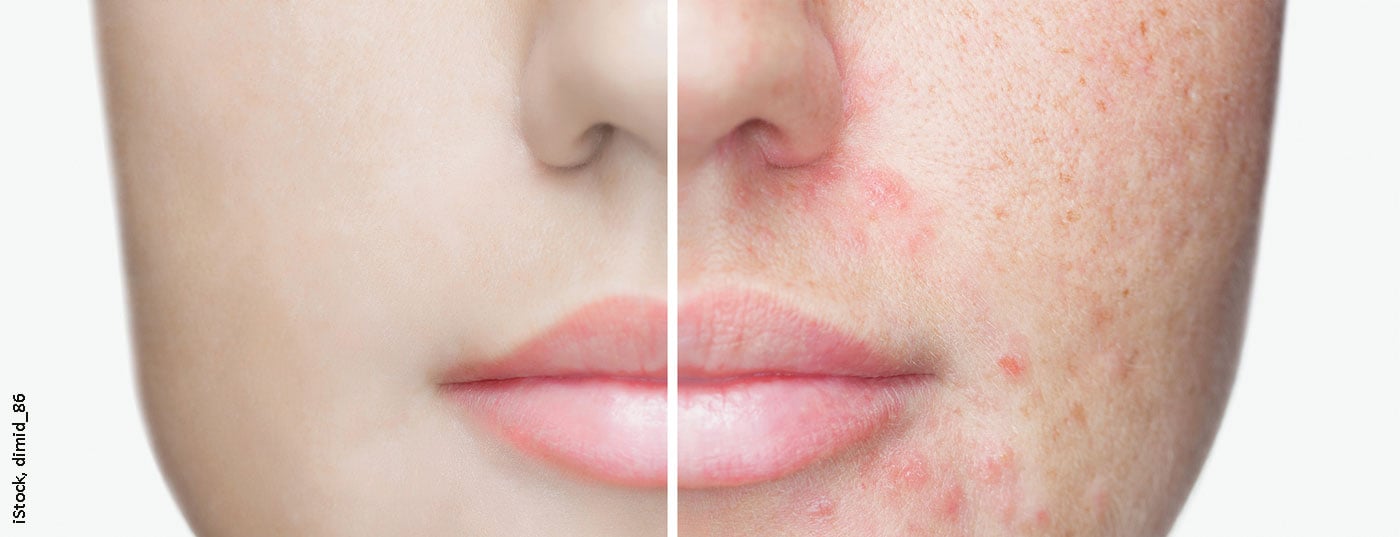The analysis of comedogenesis at the cellular level is of practical relevance, as new starting points for therapies can be elicited on this basis. In addition, empirical validation of comedolytic agents is possible, including the herbal active ingredient Silybum marianum, as shown in a recent study published in JEADV.
LRIG1positive stem cells localized in the isthmus of the hair sebaceous gland unit act as a switch by transforming a normally functioning sebaceous gland into a microcomedone, which is also referred to as the “comedo switch” [1–3]. Whether LRIG1 stem cells differentiate into a sebaceous gland or a comedone depends, among other things, on various trigger factors. Hormonal changes (e.g. puberty) and environmental influences, but also medications, can lead to an increase in horny cell production (hyperkeratosis) and sebum production (seborrhea). The latter is a breeding ground for bacteria, especially propionibacteria (P. acnes), which eventually lead to the visible clinical manifestations [4].
Relapse prophylaxis through control of switching factors.
Microcomedones are clinically invisible but microscopically detectable preliminary stages of blackheads. These structures are an important target for the prevention of acne recurrence. Microcomedones are formed by the proliferation of horn-forming cells and also occur in healthy skin, but dissolve here. In patients with acne or acne-prone skin, this process is accompanied by inflammatory reactions, so-called micro-inflammations [4]. As a result of the inflammatory processes, there is excessive keratinization and insufficient desquamation of dead cells. As a result, the excretory ducts of the sebaceous glands become blocked and this disturbs or interrupts the outflow of sebum, leading to the plug known as a comedone [4]. Prevention of the “comedo switch” is a primary goal for lasting effects of acne therapy and means that switching factors are adequately controlled in a long-term perspective.

Silybum marianum as a proven active ingredient
In a 2020 study published in the Journal of the European Academy of Dermatology and Venerology, researchers demonstrated the comedolytic effect of an extract derived from milk thistle (Silybum marianum) [5]. The in vitro effects of Silybum marianum extract (SMFE) were studied in sebocyte culture by RNA sequencing. Proteins expressed in microcomedones were analyzed by proteomics, immunohistochemistry, and Western blotting. The severity of microcomedones was correlated to the number of lesions and keratin expression in acne patients (n=23) who applied a topical formulation containing SMFE. The biomarkers of comedogenesis were defined as keratins K75 and K70, which, like LRIG1, are localized in microcomedones. The use of SMFE resulted in a significant reduction in the microcomedone index in non-lesional skin over the 48-week period. The reduction in the microcomedone index and the decrease in clinical lesions over time were highly correlated.
Literature:
- Saurat JH: Treating acne in 2020. Back to the roots. 101. Annual Meeting of the Swiss Society of Dermatology and Venereology, 20.09.2019
- Saurat JH: Strategic Targets in Acne: The Comedone Switch in Question. Dermatology 2015; 231(2): 105-111. doi: 10.1159/000382031. Epub 2015.
- Barnes L, Puenchera J, Saurat J-H, Kaya G: Lrig1 and CD44v3 Expression in the Human Folliculosebaceous Unit. Dermatology 2015; 231: 116-118.
- Das S, Reynolds RV: Recent Advances in Acne Pathogenesis: Implications for TherapyAm J Clin Dermatol 2014; 15: 479-488.
- Fontao F, von Engelbrechten M, Seilaz C, Sorg O, Saurat JH: Microcomedones in non-lesional acne prone skin New orientations on comedogenesis and its prevention. JEADV 2020; 34(2): 357-364, https://doi.org/10.1111/jdv.15926
- Nguyen DS: Goodbye “unclean” skin. How galenics contribute to acne skin care success. DAZ 35/2018. www.deutsche-apotheker-zeitung.de/daz-az/2018/daz-35-2018/unreine-haut-ade
- PTAheute – Journal of the German Pharmacist Newspaper for Pharmaceutical-Technical Assistants, www.ptaheute.de
DERMATOLOGY PRACTICE 2020; 30(2): 36
HAUSARZT PRAXIS 2020; 15(6): 18











